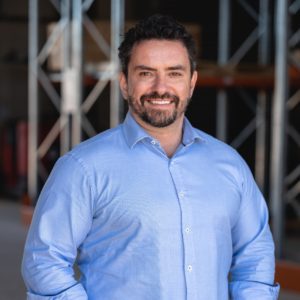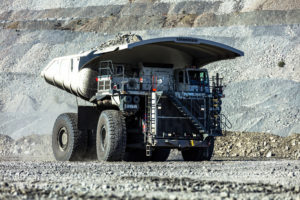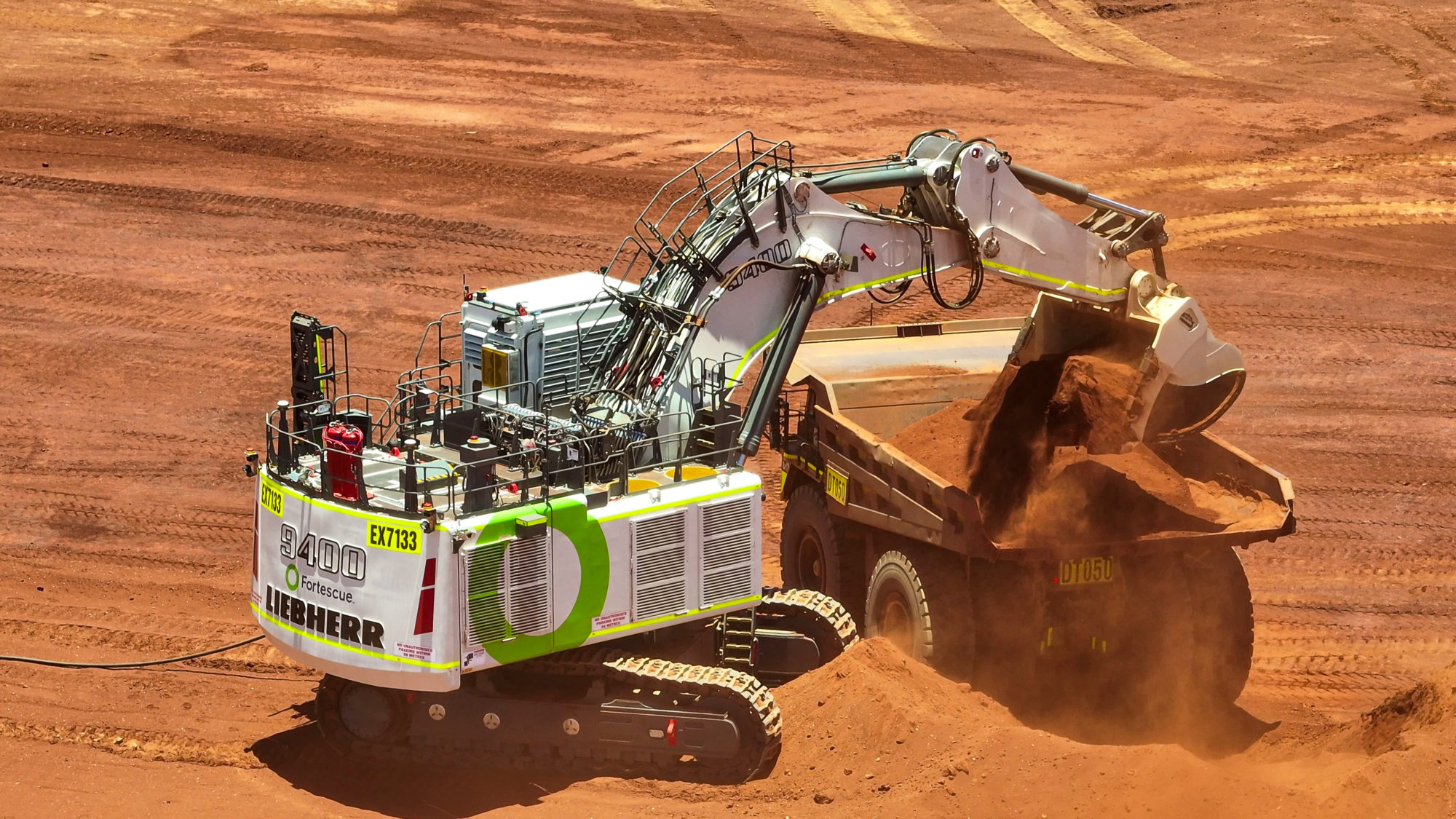Liebherr is growing in the Australian market and has been making some really significant investments to reflect that. This includes expanding its Perth mining facility, adding 47,000 m2 of workshop, office and build space to the complex. Perth is Liebherr-Australia’s second largest branch after the company’s head office in Adelaide, South Australia. Ahead of The Electric Mine 2024 event May 21-23 in Crown Perth, IM Editorial Director Paul Moore caught up with Juan Lorenzo, Liebherr-Australia National Sales and Marketing Manager, Mining. Liebherr is the Lunch Sponsor at the conference plus has an exhibitor booth and is attending with a large delegation. Plus Derek Alband, Equipment General Manager – International Sales at Liebherr Mining will present ‘Redefining sustainability in the electric age’ on Day 3, May 23. You can still register at www.theelectricmine.com
Juan Lorenzo, Liebherr-Australia National Sales and Marketing Manager, Mining

Q How is Liebherr mining equipment perceived in Australia in terms of quality, performance and support?
The Australian market knows that Liebherr equipment is synonymous with quality engineering. However, I would say that the support behind the equipment is what really sets us apart from other OEMs. And while our portfolio of machines is not the largest, our products are very well thought out for what the market needs. They perform at a very high level of productivity and efficiency, which is what our customers have now come to expect and why they keep coming back to us. The performance of our machines is also reflected in their popularity in diverse use cases from new purchases to contractor fleets plus wet and dry hire rental, such as with National Group and others.
Q Is the high performance of Liebherr machines partly linked to robustness and component performance?
They are very robust machines and have been proven in the most challenging applications in Australia from magnetite iron ore to hard rock lithium. They outperform others in terms of productivity, such as the fastest cycle times for mining excavators. Our engines are also very tough. In fact, today we are a one stop shop for major components, including engines, electric drive systems and even wear parts. This means customers have one point of contact plus they can be confident everything will work together as it should.
Q Can you talk more about Liebherr’s vertical integration in mining?
Of course there was some initial conservatism but our new level of vertical integration has been very well received, including our new D9812 and D9816 engines. When you really look underneath it all, big customers don’t want to have to deal with too many vendors. Our components are all designed to work in harmony for the highest possible performance over a long working life. Integrating a lot of components from diverse manufacturing sources can mean a lot of rework at those interchanges and connections, so you can lose power and productivity. It is also worth remembering that Liebherr engines are not a new thing – they are just new in big mobile mining machines and have actually already been deployed in our dozers and a wide range of Liebherr construction equipment for a number of years as well as in gensets used in mining. The engines that we have put into our mining excavators in Australia have already proven themselves in the R 9400 and R 9600.
Q Looking at individual excavator models, can you talk about where each one finds its niche and why?
The R 996 was a class leader for a long time, but the R 9600 has really filled its shoes well, breaking numerous production records even to the point of almost getting into R 9800 performance territory. This is quite a result for an excavator that was only introduced in 2021. Plus today, unlike in the past, we have more excavators going into hard rock as we have going into coal which is really being driven by the R 9600, such as the units that are at BHP South Flank, which were repowered to D98 engines. Contractors also see this machine as being very versatile as it sits just as easily in coal as it does in hard rock. The R 9800 also has applicability in hard rock but its big market is for high tonnage overburden removal in coal – with numerous big miners and contractors having deployed it for that purpose including Mt Arthur, Olive Downs, Boggabri, Moolarben, Carmichael and many others. The new R 9300 is also a versatile machine that finds a home in many hard rock mines, such as gold, lithium and other metals – the first unit in Australia went to Maca for the Karlawinda gold project. The R 9400 is a real workhorse and is also used in metallic mines but also in coal as a coal clean up and back up machine.
Liebherr T 264 mining truck at a customer site

Q What about the evolution of your trucks usage in Australia?
Our trucks are really proving themselves in different commodities including iron ore and coal and with both owner operators and contractors. The zero emissions agreement with Fortescue is taking things to another level in terms of both volume but also Liebherr helping to lead the way in mining with new technology. Under the partnership, Fortescue and Liebherr are developing mining haul trucks integrating the zero emission power systems developed by Fortescue WAE. Delivery of a minimum 120 haul trucks will follow, aligned with Fortescue’s fleet replacement and sustaining capital expenditure forecast.
Q How does the new Perth facility reflect market changes and growth for Liebherr, especially for new technology?
We have invested in expanding our facility in Perth to respond to market growth in Western Australia. We are also supporting the roll out of the zero emission T 264 trucks with Fortescue from that location. The first trucks are currently going their validation phase and it has been publicly stated that these are expected to be operational in 2025.
Q What has your strategy been when looking to future mining equipment needs?
Our development has been very drivetrain and powertrain agnostic using a modular approach. That is because our focus will be wherever the customer’s focus is – we are not pushing any particular technology to them. If they want to go battery or fuel cell, we will be able to support them. But there are also other technologies down the track that Liebherr is also putting a lot of work into – including hydrogen and methanol combustion engines. Plus all our engines are HVO compatible and we are also looking at ammonia and sophisticated E-fuels. Lastly it is worth noting the work we are doing with excavators – we are ready to meet demand for electric excavators and our first new electric unit in Australia, a R 9400 E in backhoe configuration, achieved 1 Mt moved in March. Plus we successfully converted a diesel R 9400 to electric for Fortescue, so we are also ready to meet conversion needs as well.











